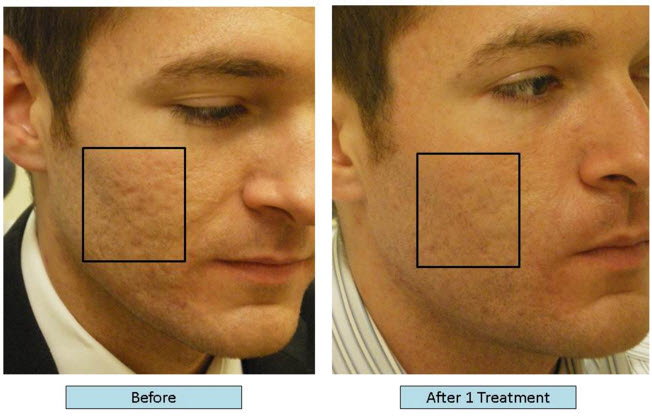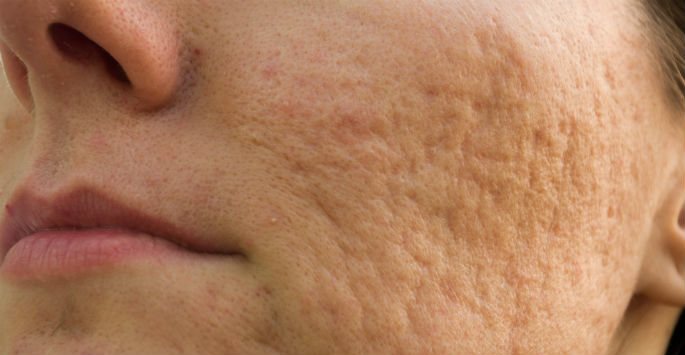Discovering Skin Problems: Dealing With and recognizing Acne Scars for Healthier Skin
Acne scars represent a significant problem for people seeking to maintain healthy and balanced skin, as they can influence both appearance and self-esteem. Recognizing the numerous types of scars, from atrophic to hypertrophic, is vital for identifying suitable treatment choices.
Understanding Acne Scars

The body's natural healing procedure can result in either atrophic marks, which show up as anxieties in the skin, or hypertrophic scars, which are elevated and arise from overflow of collagen. In addition, the psychological toll of acne marks must not be ignored; many people report sensations of humiliation, anxiousness, and reduced self-worth. This emotional concern can affect social communications and overall lifestyle.
Addressing acne scars calls for a detailed understanding of their development and influence. Recognition of the capacity for lasting consequences connected with unattended marks can encourage people to look for proper therapies. Early treatment and efficient administration techniques can substantially boost skin look and improve mental durability, emphasizing the importance of understanding the intricacies bordering acne marks.
Types of Acne Scars
Acne scars can be classified right into distinctive kinds, each displaying special attributes and needing particular treatment approaches. acne scars. The key sorts of acne marks include atrophic, hypertrophic, and keloid scars

Hypertrophic scars, on the other hand, are elevated above the skin level and are the outcome of too much collagen manufacturing throughout the healing procedure. They typically continue to be within the limits of the original acne sore. Keloid scars are similar yet extend past the initial injury site, forming bigger, increased areas that can be itchy or excruciating.
Recognizing these sorts of marks is essential for selecting appropriate treatment options. Different marks may react much better to particular therapies, such as laser therapies, fillers, or medical interventions, emphasizing the significance of a tailored technique to acne mark administration.
Identifying Your Scars
Acne scars typically drop into 2 groups: atrophic and hypertrophic marks. These can even more be identified into ice-pick marks, boxcar marks, and rolling scars, each displaying distinctive qualities and requiring different techniques for assessment.
Hypertrophic marks, on the other hand, are raised and occur because of extreme collagen manufacturing throughout the recovery procedure. Identifying the specific features of your scars-- such as appearance, depth, and width-- is essential for appropriate recognition (acne scars treatment). In addition, take into consideration the circulation of marks throughout your skin, as this can show the intensity and duration of the acne condition
Engaging with a dermatologist can offer important understandings right into the nature of your marks, assisting in the distinction in between numerous types. A comprehensive understanding of your marks will inevitably bring about a more tailored and efficient therapy strategy, ensuring a more clear and healthier complexion.
Treatment Choices Readily Available
Identifying the specific type of acne marks existing on your skin lays the groundwork for exploring reliable therapy alternatives. Usual sorts of acne scars consist of atrophic (clinically depressed), hypertrophic (elevated), and post-inflammatory erythema.
For atrophic scars, alternatives such as chemical peels, microneedling, and laser resurfacing are extensively utilized. Chemical peels off use acids to remove the outer layer of skin, promoting brand-new cell development.
Hypertrophic scars can be treated with corticosteroid injections to squash the scar or laser therapy to decrease soreness and improve look. Silicone gel sheets and stress dressings may also help in managing elevated marks.
On top of that, facial fillers can temporarily fill up in depressions from atrophic scars, while medical excision might be suitable for serious instances. Each treatment choice has its advantages and considerations, making it important to seek advice from a skin doctor. They can offer individualized recommendations based on the type and intensity of your marks, as well as your skin type and general wellness.
Tips for Avoidance
Efficient prevention techniques can considerably decrease the possibility of developing acne scars. Using non-comedogenic products helps prevent clogged pores, which can exacerbate acne.
Staying clear of need to stand out or choose acne lesions is important, as this can cause deeper skin damage and enhance the danger of scarring. Rather, think about utilizing a cold compress or over the counter treatments to reduce swelling and soreness.
Sunlight security is another essential facet of avoidance; ultraviolet you could try these out (UV) rays can darken marks and impede the healing procedure. Using a broad-spectrum sun block with at the very least SPF 30 daily can safeguard the skin and promote also recovery.
Finally, maintaining a well balanced diet regimen rich in vitamins, anti-oxidants, and minerals supports skin health and recovery. Remaining hydrated and taking care of anxiety levels can also play a significant duty in decreasing acne flare-ups. By executing these approaches, individuals can considerably lessen their opportunities of creating acne scars.
Verdict
To conclude, understanding and recognizing acne scars is crucial for efficient therapy and achieving much healthier skin. Various kinds of acne scars, consisting of hypertrophic and atrophic marks, demand particular interventions tailored to specific requirements. Therapy choices array from chemical peels and microneedling to corticosteroid injections, stressing the relevance of speaking with a skin specialist. In addition, embracing a gentle skin care regimen and safeguarding the skin from UV direct exposure can significantly contribute to the prevention of additional scarring and total skin wellness.
The body's natural healing process can result in either atrophic scars, which appear as depressions in the skin, or hypertrophic scars, which are raised and result from overproduction of collagen. They are further divided into 3 subtypes: ice choice marks, boxcar marks, and rolling marks. Acne marks normally go to the website drop right into two classifications: atrophic and hypertrophic scars. These can better be identified right into ice-pick marks, boxcar marks, and rolling scars, each exhibiting distinct characteristics and requiring various strategies for analysis.
Different types of acne scars, including hypertrophic and atrophic marks, my website require particular interventions customized to specific requirements.
Comments on “Skin Rejuvenation Treatments: Revitalize Your Skin and Decrease Acne Scars”